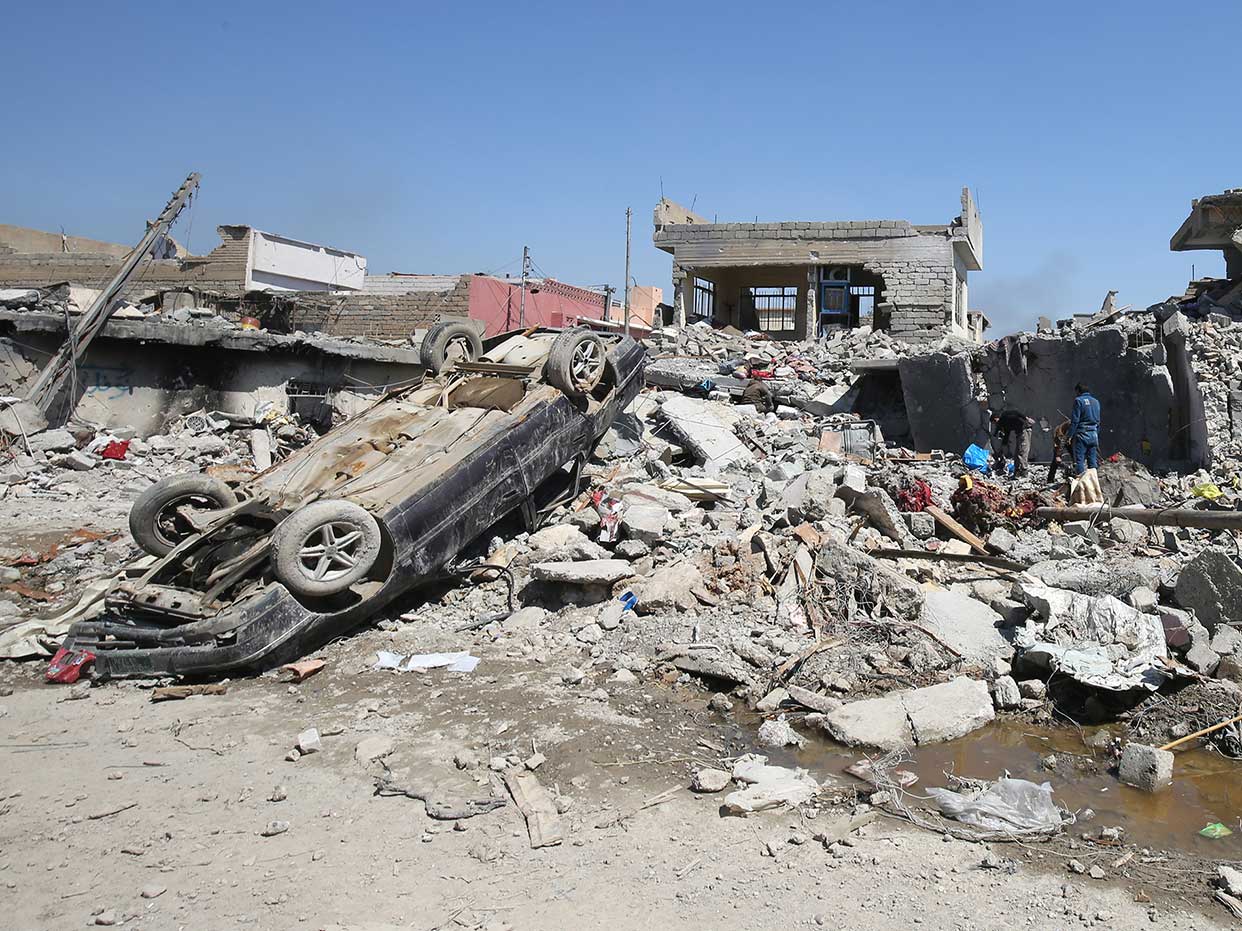More than 100 civilians killed in US air strike in Mosul
Pentagon reveals attack on IS snipers hit building filled with explosives

The Pentagon has admitted that an air strike targeting Islamic State snipers on the roof of a house in the Iraqi city of Mosul in March killed at least 105 civilians. A further 36 people are still unaccounted for.
"It appeared to be the single largest incident of civilian casualties involving the US-led coalition since it started operations against Islamic State in Syria and Iraq in 2014," Reuters says.
A US military investigation found the strike inadvertently triggered explosives placed in the building by IS fighters. The house was being used by a large number of civilians to shelter from intense fighting between the militants and Iraqi security forces.
The Week
Escape your echo chamber. Get the facts behind the news, plus analysis from multiple perspectives.

Sign up for The Week's Free Newsletters
From our morning news briefing to a weekly Good News Newsletter, get the best of The Week delivered directly to your inbox.
From our morning news briefing to a weekly Good News Newsletter, get the best of The Week delivered directly to your inbox.
"The civilians had gathered in the lower floors of the building after being expelled from their homes by IS fighters," the BBC says.
According to the investigation, US military had targeted two IS snipers with a "precision-guided munition" for the strike in order to "minimise collateral damage", but the IS explosives caused the entire structure to collapse.
US Central Command said those organising the strike "could not have predicted the presence of civilians in the structure prior to the engagement", added the BBC.
"Critics have said the 17 March airstrike demonstrated that the United States has been too quick to use air power in a congested city filled with hundreds of thousands of civilians," says the New York Times.
A free daily email with the biggest news stories of the day – and the best features from TheWeek.com
-
 How Bulgaria’s government fell amid mass protests
How Bulgaria’s government fell amid mass protestsThe Explainer The country’s prime minister resigned as part of the fallout
-
 Normalising relations with the Taliban in Afghanistan
Normalising relations with the Taliban in AfghanistanThe Explainer The regime is coming in from the diplomatic cold, as countries lose hope of armed opposition and seek cooperation on counterterrorism, counter-narcotics and deportation of immigrants
-
 Femicide: Italy’s newest crime
Femicide: Italy’s newest crimeThe Explainer Landmark law to criminalise murder of a woman as an ‘act of hatred’ or ‘subjugation’ but critics say Italy is still deeply patriarchal
-
 Brazil’s Bolsonaro behind bars after appeals run out
Brazil’s Bolsonaro behind bars after appeals run outSpeed Read He will serve 27 years in prison
-
 Americans traveling abroad face renewed criticism in the Trump era
Americans traveling abroad face renewed criticism in the Trump eraThe Explainer Some of Trump’s behavior has Americans being questioned
-
 Nigeria confused by Trump invasion threat
Nigeria confused by Trump invasion threatSpeed Read Trump has claimed the country is persecuting Christians
-
 Sanae Takaichi: Japan’s Iron Lady set to be the country’s first woman prime minister
Sanae Takaichi: Japan’s Iron Lady set to be the country’s first woman prime ministerIn the Spotlight Takaichi is a member of Japan’s conservative, nationalist Liberal Democratic Party
-
 Russia is ‘helping China’ prepare for an invasion of Taiwan
Russia is ‘helping China’ prepare for an invasion of TaiwanIn the Spotlight Russia is reportedly allowing China access to military training


